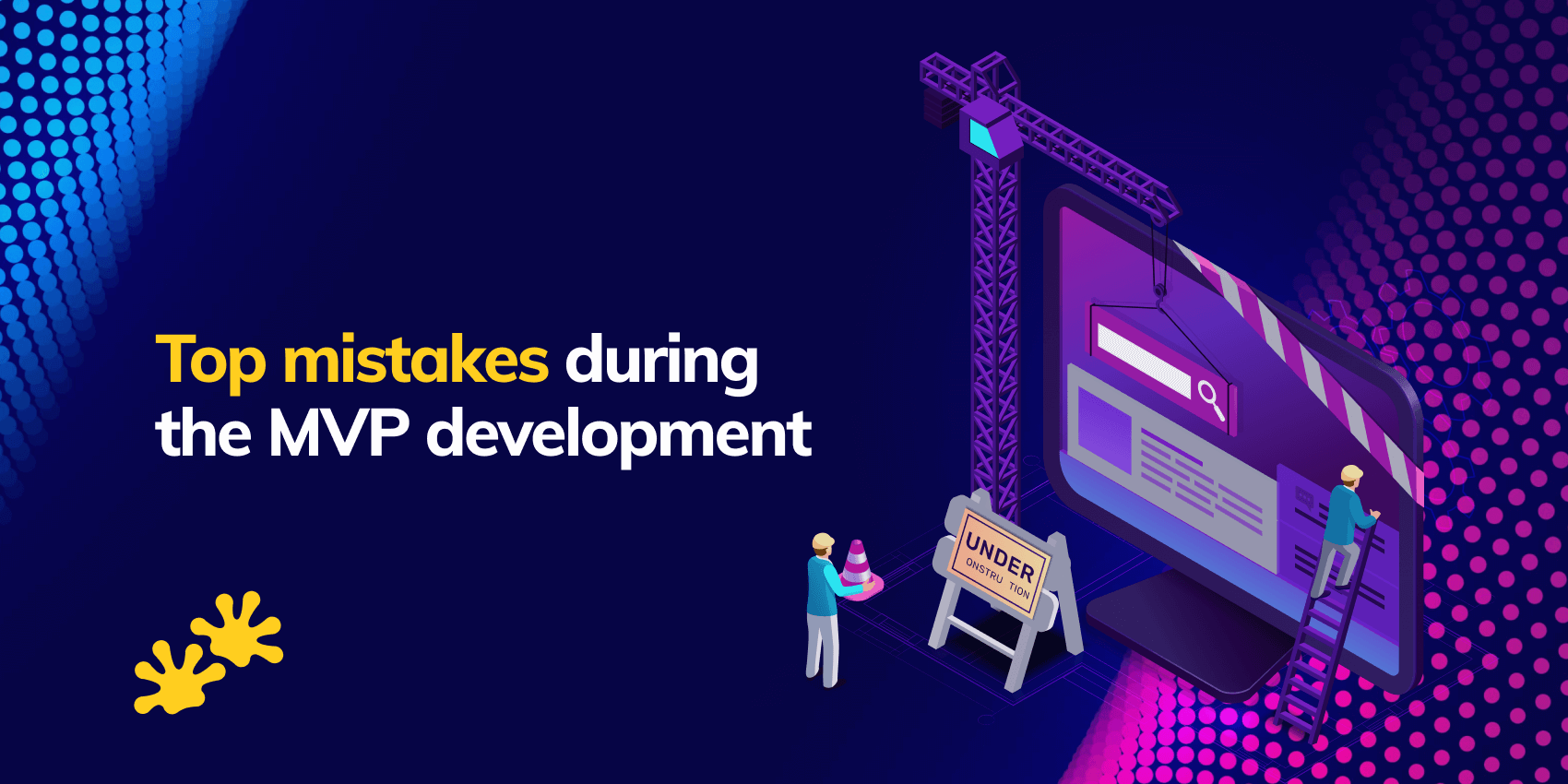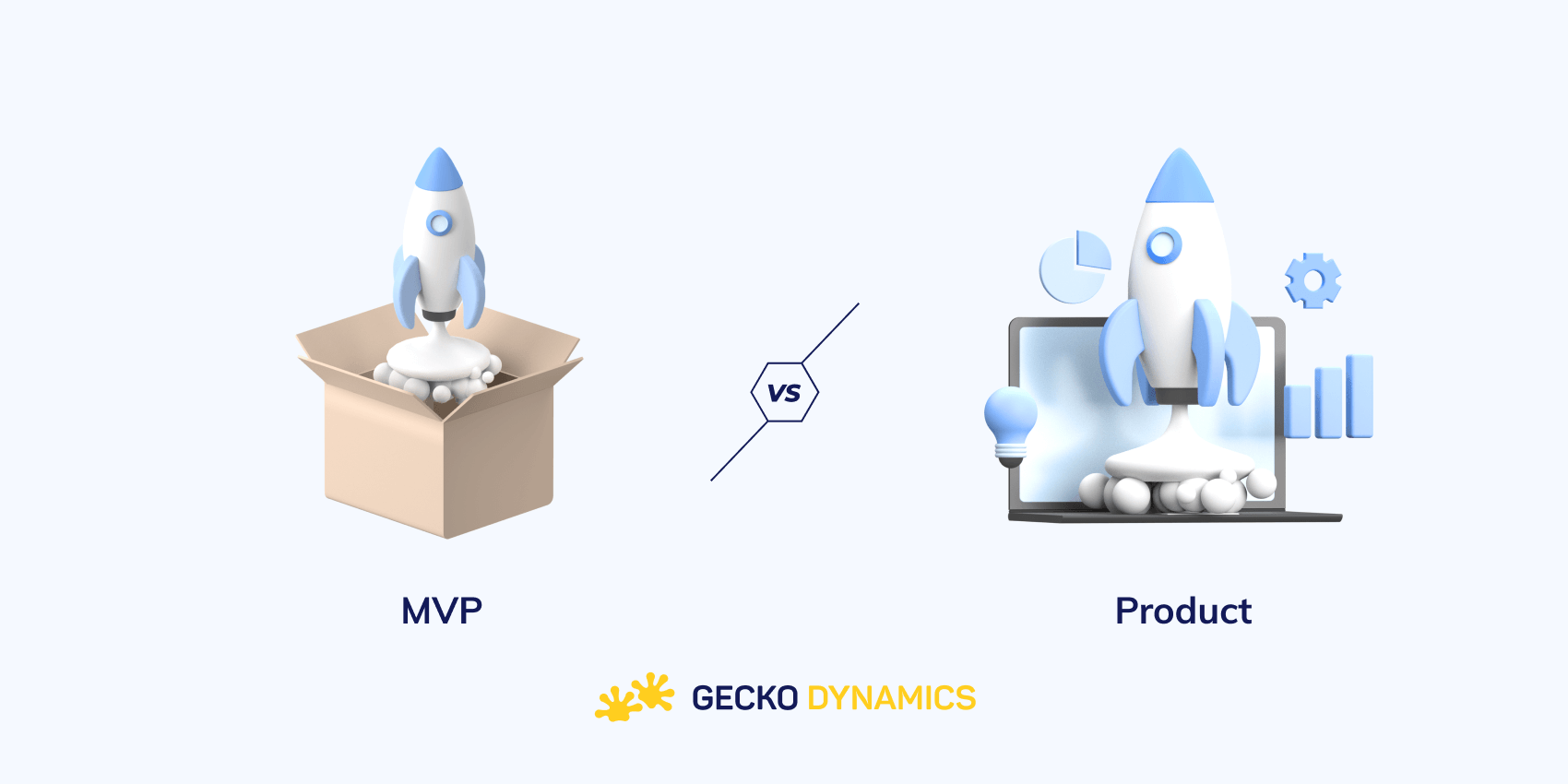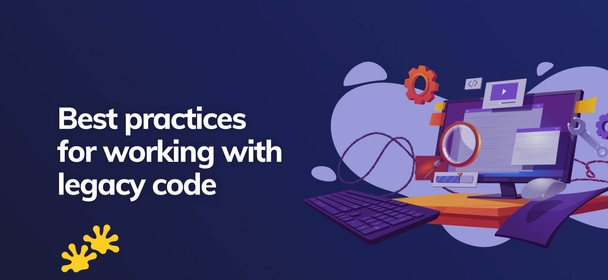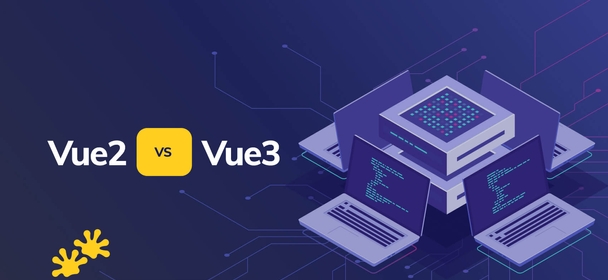Common MVP development mistakes

We have learned over past years (and market research) that there are some common mistakes that you can avoid during the MVP development. The acronym stands for “Minimum Viable Product”. That’s a shortcut when it comes to your business idea that you want to check and at the same time not to spend a pile of time and development costs of the final product. It’s a version with essential functionality to capture the attention of potential users and validate the idea. Despite its limited functionality, a successful MVP should provide enough value for potential customers to gather data and figure out whether it has the potential to succeed before you create its full version.

MVP software development for everyone
Your product should be designed to solve a specific problem, your goal is not to help everyone, but the specific group of users. If you try to save the whole world, well, it simply won’t work and you risk it being irrelevant for each person. This can result in a bad user experience and weak adaptation to their problem.
In other words, the value proposition should be tailored to a smaller group of target users who face a specific problem, and don’t have a ready solution yet. Thinking from their perspective helps you with defining what will be optimal performance, the core value of your product and how it reflects their needs. On the other hand, a very specific problem for a very specific group can create a solution that could be used by up to 10 other people in the world. Understanding the potential users is essential to solve their problems, always check potential competitors as well as gather all feedback you can receive. Strong foundations for your idea will simplify the whole process and can save you many hours and a pretty big pile of money. In other words, the value proposition should be tailored to a smaller group of users who face a specific problem, and don’t have a ready solution yet. Thinking from their perspective helps you with defining what will be the core value of your product and how it reflects in their needs. On the other hand, a very specific problem for a very specific group can create a solution that could be used by up to 10 other people in the world. Understanding the potential users is essential to solve their problems, always check potential competitors as well as gather all feedback you can receive. Strong foundations for your idea will simplify the whole process and can save you many hours and a pretty big pile of money, especially in marketing and sales activities.
Before starting an MVP development process and final product launch, think about your potential customers and ask yourself few questions:
- What are the user stories?
- What are their needs?
- What kind of solution are they looking for?
- How can you solve their problems?
It’s an easy way to get brilliant ideas, which can create a perfectly balanced MVP with basic features desired by customers.
Valuable feedback from target audience
It is quite logical that you need to collect the customer feedback from the users and analyze it in order to improve your product, but as we mentioned earlier you can’t be for everyone. Many people fall in love with their idea so much that they won’t listen to anyone who disagrees with them, and that can cause problems. Invest your time in writing down user persona and list of all assumptions that you can validate or invalidate.
It can be very uncomfortable to ask questions that might prove you were wrong, but as Steve Jobs said “I’m actually as proud of the things we haven’t done as the things I have done. Innovation is saying no to 1000 things.”
Trying to collect the maximum amount of feedback from the team, and anyone else involved in your business creates a way to satisfy your customers. Actually, you should be overwhelmed with data, and if not, your feedback system needs work.
Features overload
There are many trails that can lead you to success, but actually, the best way is to choose one and stick to it. As we said, MVP is supposed to test your idea against the real world. In order to do it, it should contain specific features, but for sure not every feature you can imagine. During the following years, we had clients who wanted to pack every single idea they have into MVP.
In many cases when MVP is launched for testing, it may turn out you need to change almost the entire app and get rid of all these extra features you wanted to test. Now imagine how much time and effort it will take and remember that every hour costs. Sometimes you can even overrun your budget before delivering an MVP, sounds not good, right? During the feature selection process you need to prioritize which of them should be the core ones, and which are secondary.
But there are always two sides to a story. When you focus too much on minimizing the features of an MVP, you may overprotect yourself and exclude the very core features that are key for future customers. As a result, the MVP ends up being useless to potential customers and doesn’t give you a chance to develop your product further.
MVP development process in few steps
The process of creating an MVP can be broken down into several steps. Here is a brief guide outlining the stages of MVP creation:
- Product vision - clearly define the goal of your minimum viable products. Identify the problems you want to solve and the benefits you aim to deliver to your users. Probably it’s the most important MVP stage.
- MVP functionality - focus on the most essential features that will help achieve the MVP goal. Select features that are necessary for testing and validating your concept.
- Prototype - build an MVP that demonstrates the functionality and interaction of the chosen features. This could be an interactive wireframe, mockup, tool-based prototype, or any other form of visualization.
- Test the prototype - conduct tests with users to gather feedback on the prototype. Focus on understanding how users perceive and interact with the features, and gather their insights and suggestions.
- Refine the prototype - based on user feedback, make necessary adjustments and improvements to the prototype. Address identified issues and optimize interactions.
- Build the MVP - based on the refined prototype, start building the MVP. Focus on delivering the core functionality required for the product to function.
- Test and gather data - introduce the MVP for testing and monitor user behavior. Collect data on usability, engagement, and user reactions to inform further product development.
- Analyze and learn - analyze the gathered data and user feedback. Utilize this information to make decisions regarding the future development of the product and identify areas for improvement.
- Iterate - repeat the process by iterating and refining the MVP based on the insights gained from testing and user feedback. Continue to iterate and improve the product based on validated learning.
Minimum viable product - no monetization plan
It sounds unbelievable, well it’s not so obvious. When you build a product, you make many assumptions. Some of them will be correct, and some will be wrong, no matter how good you are. Products need to be profitable, and we know that for sure. When it comes to MVP, building a plan for a sustainable stream of income can define your future growth. Numerous monetization strategies have been proven to be successful, but deciding which strategy suits you best sometimes can be quite difficult. For example, if an app monetization strategy is built around in-app purchases, organizations can use MVP to test this strategy. That can help with getting an overview of how your users are willing to pay for the service and add-ons available within the app. That gives you a chance to plan the future better.
Working with wrong team
To be honest that can be the most important thing and having the wrong people building your MVP can be a fatal mistake for your company. Companies dedicated to software and web development have well-established teams that work well with each other and can deliver on time. When it comes to choosing partners, you need to be sure that they deliver the right thing at the right time.
MVP needs to be developed quickly, with the constant need for testing and upgrading. Having a professional team means that they won’t miss deadlines and in the end will deliver your product on time. Second thing is that experienced developers help with creating the right technical architecture, also they are aware of the business context of the product they’re working on. This results in a better user experience and the final product itself.
Conclusion
These are just common mistakes people make when building an MVP, but the truth is, there are many others not mentioned in this article. You need to remember that not every single MVP will be a success, to increase the chance of success the best way is to work with experienced people. In most cases, they can validate basic ideas just because of their vast experience and the time spent working on projects like this. Avoiding mistakes can help with making your MVP successful at its development stage and later on.
If you want to talk with us about your project - Contact Us.

